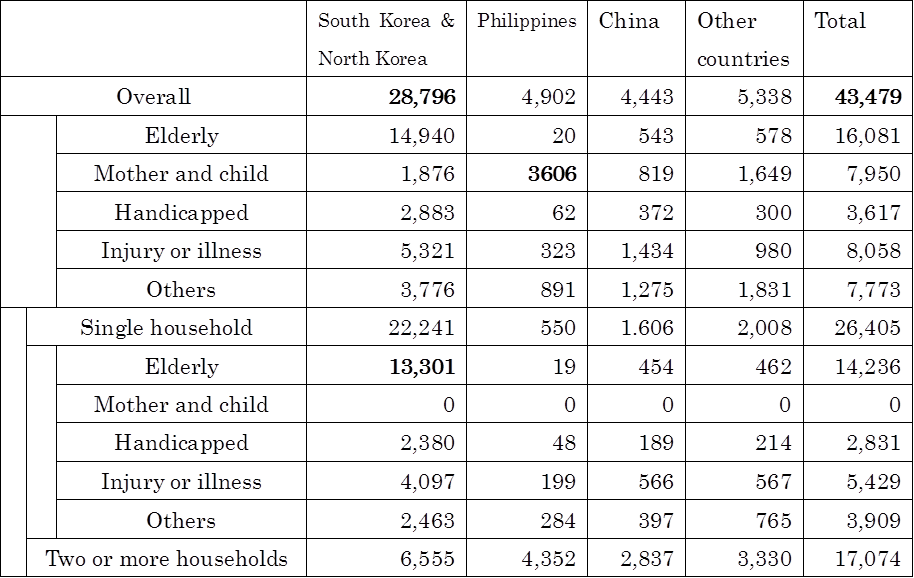Column Finance and the Social Security System 2018.06.08
【Aging, safety net and fiscal crisis in Japan】No.127: Livelihood-Protected Households with Foreign Heads of Household
The Livelihood Protection Law stipulates that the government should provide necessary protection to all citizens who are in need of making a living, depending on their degree of distress. In other words, it is Japanese citizens, in principle, that the Livelihood Protection Law aims to relieve. However, the government also provides these welfare benefits to foreigners who meet certain requirements, such as permanent residents and refugees who have been granted residential status.
Figure 1 shows the number of households with foreign heads of household receiving livelihood protection. The number has been gradually increasing annually from 20,083 in 2000 to 30,955 in 2008. In line with the economic turmoil caused by the Lehman shock in September 2008, it jumped to 35,035 in 2009 and reached 47,058 in 2016.
Table 1 shows the breakdown of the nationalities and family composition of households with foreign heads of household who received livelihood protection in 2011. Of the 43,479 households in question, 28,796 (66.2%) are Korean or North Korean. Of these households, 13,301 are elderly and living alone. Additionally, it is noteworthy that 3,606 out of the 4,902 households of Philippine nationality are single mother and child households.
Figure 1: The number of livelihood-protected households with foreign heads of household

Source: Ministry of Health, Labor and Welfare
Table 1: Details of households with foreign heads of household receiving livelihood protection
--- 2011---

Source: Ministry of Health, Labor and Welfare
